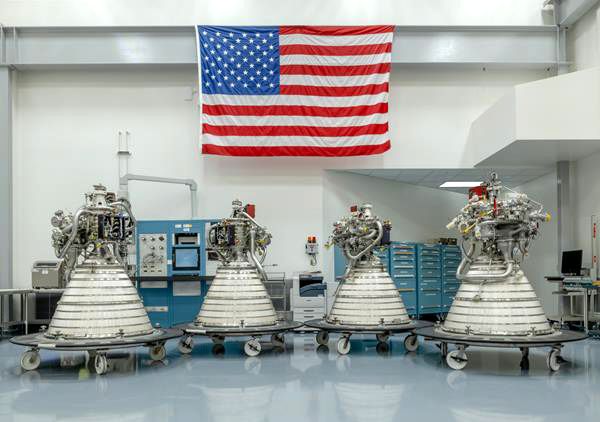
Aerojet Rocketdyne
Aerojet Rocketdyne Delivers RL10 Engines That Will Help Send NASA Astronauts to Deep Space (Press Release)
WEST PALM BEACH, Fla., Feb. 03, 2020 -- Aerojet Rocketdyne recently delivered four RL10 upper stage engines to NASA’s Stennis Space Center that will help power NASA’s Space Launch System (SLS) rocket as it carries astronauts aboard the Orion spacecraft to deep space. These missions are part of NASA’s Artemis program, which will land the first woman and next man on the Moon, and set the stage to send astronauts to Mars.
“Nearly 500 Aerojet Rocketdyne RL10 engines have powered launches into space,” said Eileen Drake, Aerojet Rocketdyne CEO and president. “Aerojet Rocketdyne continues to upgrade and improve this highly-reliable, flight-proven engine. The RL10’s we just delivered to NASA will power the SLS upper stage on missions that safely launch our astronauts to explore deep space destinations.”
A single RL10 engine will provide nearly 25,000 pounds of thrust and serve as the main propulsion for the Interim Cryogenic Propulsion Stage (ICPS) that will fly atop the SLS rocket Block 1 in support of each of the first three Artemis missions. Later Artemis missions will use the evolved SLS Block 1B rocket configuration that includes the Exploration Upper Stage (EUS) powered by four RL10 engines to send Orion and large cargos to the Moon. The four RL10 engines on EUS provide more than 97,000 pounds of thrust.
Aerojet Rocketdyne is under contract to deliver 10 RL10 engines to NASA to support the Artemis program. One of the four engines that were recently delivered will be used to support the Artemis II mission that will use the ICPS upper stage, while the other three are slated to support future Artemis missions aboard the EUS. Delivery of the remaining six engines will be completed by 2021.
“The EUS is really a game changer for SLS and NASA’s lunar exploration program in terms of payload mass,” said Steve Wofford, Space Launch System Program Liquid Engines manager at NASA’s Marshall Space Flight Center. “These RL10 deliveries are a key stepping stone toward that future success.”
Evolving the SLS rocket to the Block 1B version that uses EUS significantly increases the amount of payload that can be carried to lunar orbit; up to 40 metric tons compared to the 26 metric ton capability provided by the SLS Block 1 configuration. It also provides the option for “co-manifested” payloads such as large components for NASA’s Gateway orbiting lunar outpost, landers, or surface systems.
Aerojet Rocketdyne has completed engine qualification testing for EUS and all other engineering activities, including providing NASA with the information necessary for the agency to human rate the RL10 engines. Qualification of the engines for ICPS will be completed in 2020.
Source: Aerojet Rocketdyne

No comments:
Post a Comment